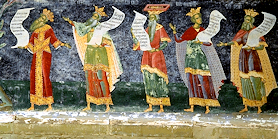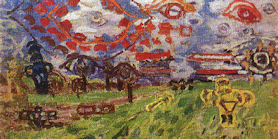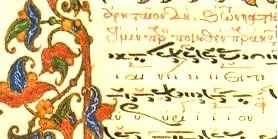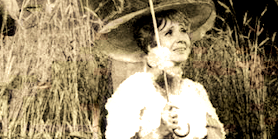Past and present
The Institute of Art History and other research institutes were established by a decree of the Council of Ministers whereby the Romanian Academy was subordinated to the state (decree published in the official gazette, Monitorul Oficial, issue 132 bis of 9 June 1948). A reformed and cleansed Academy was put in charge of the newly-established institutes. This Soviet-inspired system bespoke the imposition of post-war Romanian government. Nonetheless, the Academy institutes continued to hire top researchers, some of whom were politically undesirable, and enjoyed some degree of autonomy in the 60s and early 70s, during a relative loosening of ideological constraints.
Legally established in 1948, the
The Academy institutes were reorganised in 1975. The
In 1990, a government decision (decree 4/1990 on the organisation of the
Directors
After Professor Oprescu's directorship, the position was held by high-profile researchers such as Mircea Popescu, Ion Frunzetti, Răzvan Theodorescu, Vasile Drăguț, Elena Zottoviceanu, Theodor Enescu, Manuela Cernat, succeeded after 1990 by Magda Cârneci, Andrei Pleșu, Ioana Vlasiu, and Remus Niculescu. Professor Silviu Angelescu of the University of Bucharest Faculty of Letters was in charge of the Institute from 1999 till March 2011. In April 2011, dr. Marina Sabados was temporary assigned director of G. Oprescu Institute. From 1 May 2011, the institute is run by dr. Adrian-Silvan Ionescu, senior researcher I. Art critic and historian Gheorghe Vida was deputy director from 1995 till his retirement, at the beginning of 2011. He was followed by Marina Sabados (May 2011 - December 2013), prof. Alin Ciupală (December 2013 - December 2017), and dr. Constantin Ciobanu.
Where we are
The
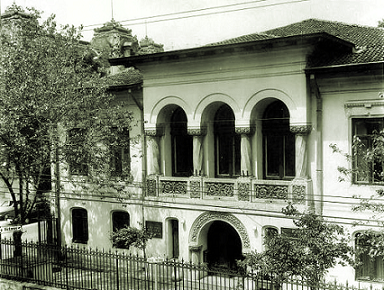 Built in the 1860s, the mansion was acquired decades later by Constantin Dissescu (1854-1932), a distinguished politician and professor of law. The new owner commissioned architects Grigore Cerchez and A. Clavel to renovate the building. The design proposed by the two showcases the neo-Romanian style, an architectural favourite at the turn of the century. When work was completed, Calea Victoriei - the core of
Built in the 1860s, the mansion was acquired decades later by Constantin Dissescu (1854-1932), a distinguished politician and professor of law. The new owner commissioned architects Grigore Cerchez and A. Clavel to renovate the building. The design proposed by the two showcases the neo-Romanian style, an architectural favourite at the turn of the century. When work was completed, Calea Victoriei - the core of
After Constantin Dissescu's death, his residence housed the Institute of Italian Culture (1933-1949), followed by the Romanian-Russian Institute, the dorms of the Polytechnic Institute, the Reed Directorate of the Ministry of Chemical Industry. Having been put to so many different uses, the building had its interior architecture altered. The house was renovated in the early 2000s.
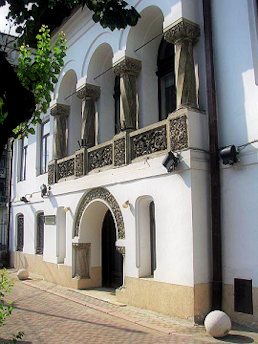 Listed as a historical monument, the Dissescu Mansion stands out through its elegant lines, harmonious proportions and Brancoveanu-style decoration. Its distinctive character is given by the loggias of the two façades, with their columns and railing of intricately carved stone. The interior decoration still retains some of the outlay designed by Grigore Cerchez. The mansion houses the institute's collections: the art library (the only one of its kind in
Listed as a historical monument, the Dissescu Mansion stands out through its elegant lines, harmonious proportions and Brancoveanu-style decoration. Its distinctive character is given by the loggias of the two façades, with their columns and railing of intricately carved stone. The interior decoration still retains some of the outlay designed by Grigore Cerchez. The mansion houses the institute's collections: the art library (the only one of its kind in

